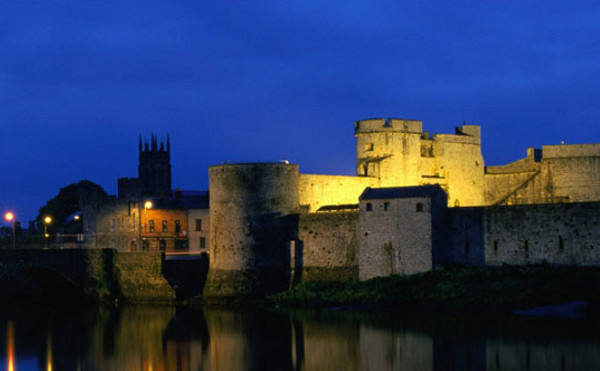King John's Castle
Built between 1200 and 1212, King John's Castle has over 800 years of fascinating and bloody history. Recently restored and fitted out with interactive touch-screen technology, 3D models and activities to involve the visitors, young and not so young, this castle really brings history to life.
John, younger brother of King Richard I, was appointed Lord of Ireland in 1177. Upon Richard's death in 1199, John was proclaimed King of England. His reign was not peaceful. He had conflicts with the barons of northern England which resulted in a rebellion, which was finally settled with a charter, or agreement which was later renamed as Magna Carta or "Great Charter". He also had conflict with the Pope, and military conflicts with King Philip of France over lands in northern France.
King John remained Lord of Ireland throughout his reign and established the Castle in Limerick as a defensive structure in his military clashes with the indigenous Irish chieftains and Anglo-Norman settlers. He drew on wealth raised in Ireland to fund his war in France, and so he had to use military might in Ireland to assert control, suppress rebellion, and keep the money flowing into his war chest.
Other bloody chapters in King John's Castle's history were the 5 sieges of Limerick, several hundred years later, during the 17th century. During the 1642 Siege of Limerick the Irish Confederacy surrounded the Castle in an attempt to capture it from the English Protestant garrison. On your visit to King John's Castle, see how they dug mines under the castle walls as a way of collapsing them, and cut off food and water supplies to the defenders.
Another major seige occurred in 1690, when the Jacobites retreated to the castle following their defeat at the Battle of the Boyne. The Jacobites managed to prevail, however, one year later, the Williamites renewed their assault on the castle. In the end, terms of surrender were drawn up and agreed. This became known as the Treaty of Limerick. The stone on which this was signed (the Treaty Stone) is mounted on a plinth on the quayside on the opposite side of the river to the castle.
This treaty was very important because it promised that the civilian population of Limerick would be respected, that the Catholic religion in Ireland would be tolerated, that there would be no confiscation of Catholic-owned lands, and that Sarsfield and the Jacobite army would be allowed to return to France. That journey to France became known as the Flight of the Wild Geese. Unfortunately for the Irish Catholics, the terms were not honoured by the 1697 Irish Parliament which was dominated by Protestants. Irish history could have been so different and better for everyone... The Catholics were subjected to oppression and the Penal Laws until the early 19th century.
King John's Castle is located on Castle Street, on the banks of the River Shannon. Click the map pin icon to view the location on a map.
For information about opening times, tour times and admission prices, click the "More info" button below.

